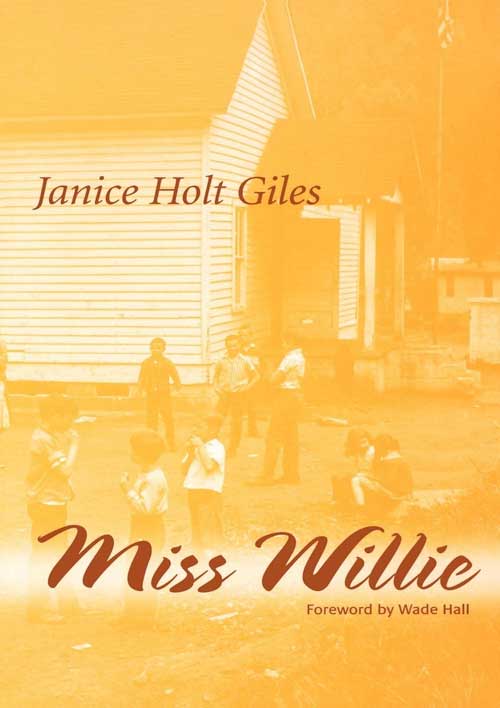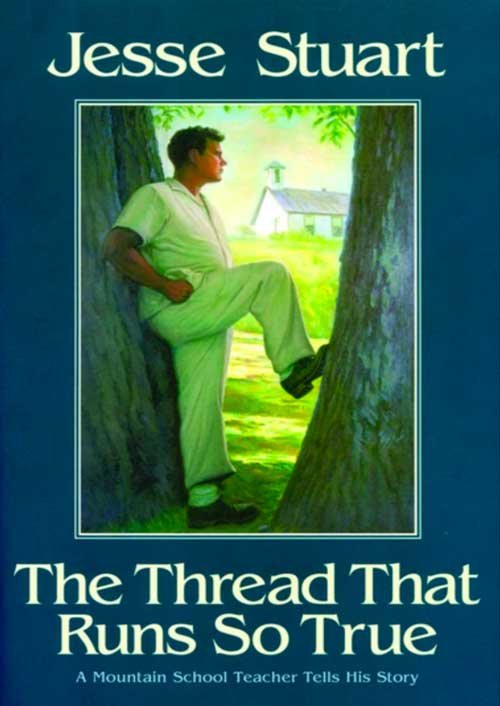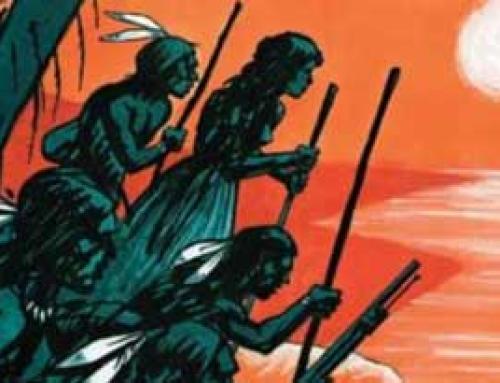One-room school life inspired two famous books by Kentucky authors. “The Thread That Runs So True” by Jesse Stuart is a nationally recognized autobiographical novel. Not as well-known but even more interesting is Janice Holt Giles’ novel, “Miss Willie,” set in the hills of South Central Kentucky in the 1950s.
 The story focuses on Miss Willie Payne, a second grade teacher in El Paso, Texas, who is bored with her life and her career. As a young woman she had wanted to become a missionary and go to China, but family responsibilities killed that dream. After more than twenty years as a teacher, she feels unfulfilled. “Something’s missing,” she confides to herself. “I get up in the morning moody and depressed, and I teach all day feeling as if I were getting nowhere and accomplishing nothing.”
The story focuses on Miss Willie Payne, a second grade teacher in El Paso, Texas, who is bored with her life and her career. As a young woman she had wanted to become a missionary and go to China, but family responsibilities killed that dream. After more than twenty years as a teacher, she feels unfulfilled. “Something’s missing,” she confides to herself. “I get up in the morning moody and depressed, and I teach all day feeling as if I were getting nowhere and accomplishing nothing.”
Her niece Mary, whom she raised, is also a teacher, but she has recently left the teaching profession to marry Hod Pierce, whose home is in Piney Ridge, a remote community in rural Kentucky. Mary writes her aunt joyful letters about her new life.
One day Miss Willie receives a letter that awakens her missionary impulses: “Do you remember what the Macedonians wrote to Paul? ‘Come over into Macedonia and help us.’ Miss Willie, come over to Piney Ridge and help us!” The school she would take over, Mary tells her, is a one-teacher, one-room log building with eight grades and forty students ranging in age from six to sixteen. The school term runs seven months, from July to January.
It is a desperately poor community, with people living “only a little above the margin of necessity.” Tobacco is their main cash crop, and even that provides but a meager income. Most families have a cow, a few chickens, and a small garden and live in a hovel with a leaky roof and a sagging floor. “They make out, and that’s about the best you can say for the way folks live on the ridge,” Mary summarizes.
It’s a challenge that seems like an answer to Miss Willie’s prayer. The forty-five-year-old spinster takes stock of herself: “I am a thin, dried-up old maid schoolteacher. I am brittle and barren and plain. But they need me!” She has heard the Macedonian call and takes the leap of faith that will transform her life.She will go to what seems like a foreign mission field in the wilds of Kentucky and, like a true missionary, convert the natives to her ways of life. She may not be able to save the world, but she can save a little corner of Kentucky. That will be her mission, but eventually she will learn from these “backward Kentuckians” more about life and love than she teaches.
When Miss Willie arrives at Piney Ridge to take over the Big Springs School, she is overwhelmed by the natural beauty of the landscape. But she soon discovers serpents in her beautiful new Eden. The people appear to be poorer and more ignorant, backward, and complacent than Mary had described. Nevertheless, with missionary zeal, she accepts the challenge. “Nothing is hopeless,” she asserts, and rolls up her sleeves to become carpenter, janitor, and home health nurse as well as teacher at Big Spring.
“Miss Willie” is a surprisingly satisfying book with an excellent storyline that I will not complete for you, because I want you to read this fine novel.
We will be discussing “Miss Willie” in our Regional Readers book discussion group which meets Tuesday, September 28, in the Jesse Stuart Foundation Conference Room. Coffee and conversation at 2:00 pm; the book discussion begins at 2:30 pm. New members are always welcome.
This book is available at the Jesse Stuart Foundation Bookstore & Gift Shop at 4440 13th Street in Ashland. For more information, call 606.326.1667 or e-mail jsf@jsfbooks.com.
By James M. Gifford
JSF CEO & Senior Editor
One-room school life inspired two famous books by Kentucky authors. “The Thread That Runs So True” by Jesse Stuart is a nationally recognized autobiographical novel. Not as well-known but even more interesting is Janice Holt Giles’ novel, “Miss Willie,” set in the hills of South Central Kentucky in the 1950s.
The story focuses on Miss Willie Payne, a second grade teacher in El Paso, Texas, who is bored with her life and her career. As a young woman she had wanted to become a missionary and go to China, but family responsibilities killed that dream. After more than twenty years as a teacher, she feels unfulfilled. “Something’s missing,” she confides to herself. “I get up in the morning moody and depressed, and I teach all day feeling as if I were getting nowhere and accomplishing nothing.”

Her niece Mary, whom she raised, is also a teacher, but she has recently left the teaching profession to marry Hod Pierce, whose home is in Piney Ridge, a remote community in rural Kentucky. Mary writes her aunt joyful letters about her new life.
One day Miss Willie receives a letter that awakens her missionary impulses: “Do you remember what the Macedonians wrote to Paul? ‘Come over into Macedonia and help us.’ Miss Willie, come over to Piney Ridge and help us!” The school she would take over, Mary tells her, is a one-teacher, one-room log building with eight grades and forty students ranging in age from six to sixteen. The school term runs seven months, from July to January.
It is a desperately poor community, with people living “only a little above the margin of necessity.” Tobacco is their main cash crop, and even that provides but a meager income. Most families have a cow, a few chickens, and a small garden and live in a hovel with a leaky roof and a sagging floor. “They make out, and that’s about the best you can say for the way folks live on the ridge,” Mary summarizes.
It’s a challenge that seems like an answer to Miss Willie’s prayer. The forty-five-year-old spinster takes stock of herself: “I am a thin, dried-up old maid schoolteacher. I am brittle and barren and plain. But they need me!” She has heard the Macedonian call and takes the leap of faith that will transform her life.She will go to what seems like a foreign mission field in the wilds of Kentucky and, like a true missionary, convert the natives to her ways of life. She may not be able to save the world, but she can save a little corner of Kentucky. That will be her mission, but eventually she will learn from these “backward Kentuckians” more about life and love than she teaches.
When Miss Willie arrives at Piney Ridge to take over the Big Springs School, she is overwhelmed by the natural beauty of the landscape. But she soon discovers serpents in her beautiful new Eden. The people appear to be poorer and more ignorant, backward, and complacent than Mary had described. Nevertheless, with missionary zeal, she accepts the challenge. “Nothing is hopeless,” she asserts, and rolls up her sleeves to become carpenter, janitor, and home health nurse as well as teacher at Big Spring.
“Miss Willie” is a surprisingly satisfying book with an excellent storyline that I will not complete for you, because I want you to read this fine novel.
We will be discussing “Miss Willie” in our Regional Readers book discussion group which meets Tuesday, September 28, in the Jesse Stuart Foundation Conference Room. Coffee and conversation at 2:00 pm; the book discussion begins at 2:30 pm. New members are always welcome.
This book is available at the Jesse Stuart Foundation Bookstore & Gift Shop at 4440 13th Street in Ashland. For more information, call 606.326.1667 or e-mail jsf@jsfbooks.com.
By James M. Gifford
JSF CEO & Senior Editor





